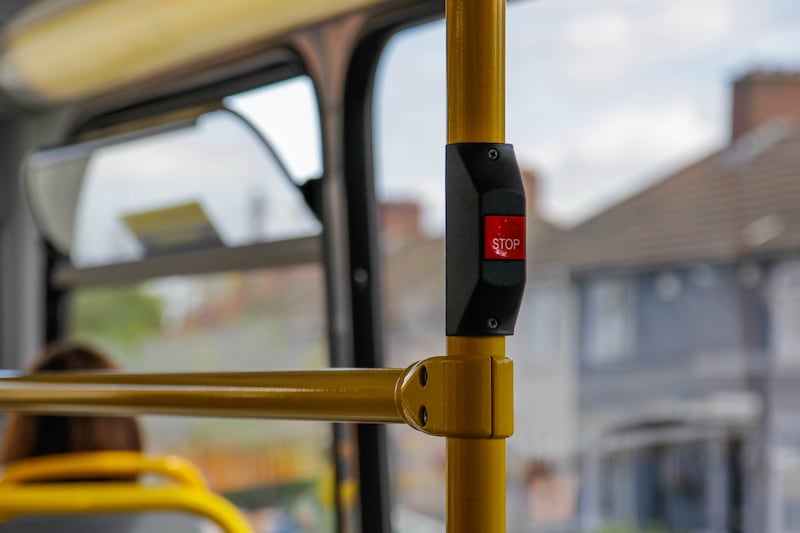Lorcan O’Connor has a mild manner, but the head of Ireland’s insolvency service shows just a hint of irritation when asked what has gone wrong with the authority he has presided over for the past 18 months.
In its first year, just over 300 people were granted one of the three options open to them by the Insolvency Service of Ireland. A similar number declared themselves bankrupt. Given that more than 100,000 people are in long-term mortgage arrears and thousands more are struggling with unsecured debt, we would expect close to 10,000 would have gone through the service or been declared bankrupt by the courts over the same period. If the system was working properly, that is.
Clearly something is wrong. O’Connor accepts this, which is why the insolvency service has had to reinvent itself this month with the launch of a new information campaign and the dropping of the fees attached to the application process.
O’Connor is reluctant to point any fingers, but it is clear that there were communications failures from the outset. And the insolvency service is only partly to blame. Before the insolvency guidelines were published in April 2013, the service appeared to spring more leaks than a colander.
Scare stories in some newspapers suggested that anyone using the insolvency service would have to surrender their health insurance, cars and even jobs if the cost of childcare made it impractical for them to work.
The stories were often wrong, and the spending guidelines, when they were published, were much less draconian than had been suggested. But many people remembered the bad news stories and didn’t pay so much heed to the new reality.
A drop in the ocean
O’Connor concedes that the number of cases dealt with already are “just a drop in the ocean”. He acknowledges that the numbers using the insolvency service in its first year were expected to be far higher. “During the summer we tried to establish what the barriers were and then we tried to remove any barriers that were under our control,” he says.
The service has now identified a lack of awareness of the solutions available as one of the main reasons people have not been availing of the insolvency process. The perceived cost of insolvency was another issue raised during research: many people thought it would cost thousands of euro.
With that in mind, the service has suspended all application fees until the end of 2015. It also stresses that while most personal insolvency practitioners charge a consultation fee, in almost all cases this is €100-€300, and some may not charge an initial fee at all.
The insolvency service is concerned that that many people struggling with debt are still living below what is considered a reasonable living standard, scrimping on food and too embarrassed to seek help. Some don’t actually see themselves as insolvent. “They knew they were struggling, yet the last thing they wanted to do was to turn their back on their debts or seek help,” says O’Connor. “We want these people to see that there is help available, that there’s no embarrassment in seeking it and no shame in taking it.”
Insolvency practitioners
As chairman of the newly formed Association of Personal Insolvency Practitioners, Tom Kennedy has dealt with a couple of hundred individuals since the start of the process last year. He had more calls in the three days after the insolvency service launched its new campaign than in the last three months.
“This tells me that the insolvency service’s new campaign is making a difference and the public is more interested and more engaged,” he says.
There is no such thing as a typical applicant. “People coming from all walks of life and professions,” says Kennedy, adding that “negative equity and unsecured debt are a major problems.
“Frequently, debtors are unable to identify themselves as insolvent. They don’t know what it means. They are ordinary people: teachers, publicans, guards, the unemployed. There is no profession that has not been touched by this.”
So how do you define insolvency? “Quite simply, if you are unable to meet all your debts as they fall due. It is not just people who are completely broke.”
According to Kennedy, people who use the services of the insolvency service could be free of all their unsecured debt.
“The level of unsecured debt is what is killing many people, and it can stop people paying their mortgage in full. The unsecured creditors can make all the noise they want, but it is the banks who hold the mortgages that have the dominant voice.
“That might be unfortunate for the unsecured creditors, but they’ve already factored that into the high rates of interest they charge. In any settlement they might get between 5 per cent and 30 per cent – if they are very lucky.”
The vast majority of people Kennedy sees “are just ordinary people who have found themselves in extraordinary situations. We might be dealing with a hairdresser who owes €25,000 one day and someone who owes €2.5 million the next.” In the case of the former, Kennedy is about to put a settlement to her creditors. If the client can raise €3,000, it will be offered as a full and final settlement. He’s optimistic the creditors will say yes.
“What choice do they have? She has no money and no prospects of ever paying it back. Yes, they might only get 10 or 20 per cent of their money back, but if the alternative is nothing, then the €3,000 settlement is a good one for them.”
He says the first year of the insolvency service has been shaky but describes it as a “learning curve” for all stakeholders.
“It is disappointing that we have not achieved more successful outcomes, and we still see creditors putting up barriers. But now that the fees have been dropped and insolvency practitioners have been protected against banks irrationally rejecting deals, I think things will improve.”
What will insolvency practitioners do? They assess the situation, putting take- home pay in one column, assets in another and liabilities in the next. They look at the make-up of the household and work out what reasonable living expenses are.
“This process allows people to see light at the end of the tunnel,” says Kennedy. “We can help everyone. The system can help everyone.”
One of the stumbling blocks, he says, is banks that “irrationally” reject realistic insolvency applications made by distressed borrowers. All told, 28 per cent of insolvency applications brought to creditors are being rejected as the main lenders exercise vetoes. In the UK that number is close to 5 per cent.
The Insolvency Service of Ireland intends to take them on from next year. Banks that reject excessive numbers of applications will be named and shamed. And the insolvency service will also contribute €750 to the cost of personal insolvency practitioners if banks reject applications “irrationally”.
BANKRUPTCY: WHO’S DOING IT?
34% Working in trades and other
28% Unemployed
25% Professional
7% Homemakers/stay at home
6% Students
62% Male
38% Female
41 Average age
€402,709 Average debt write-off
Source: New Beginning
















